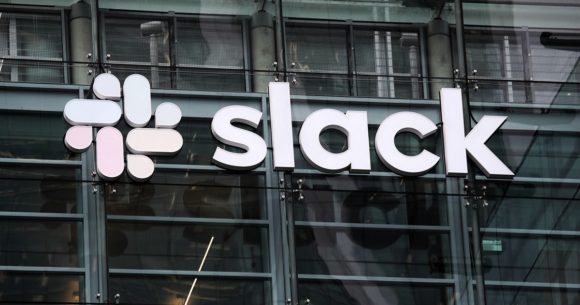When it comes to helping employees balance work hours with relaxation, Acuity Insurance Chief Executive Officer Ben Salzmann has a unique tool at his disposal: a 65-foot Ferris wheel.
Before the pandemic struck, Salzmann would regularly fire up the amusement-park staple inside the company’s Sheboygan, Wisconsin, headquarters. About twice a month, employees were invited to bring their families in for a ride or two while drinks and kid-friendly food were served.
After-work social events like these have been hallmarks of companies looking to boost employee morale and foster a sense of community. But as we all know too well, those days are over for now—and companies interested in keeping workers content and productive face an unprecedented challenge. Even among those employers that workers say handle work-life balance best, adapting to the work-from-home world has been a struggle.
“Some of [the best companies for work-life balance] have really great paid-time off policies, flexible working schedules, good parental leave, sabbaticals and gym credits,” said Amanda Stansell, senior research analyst at workplace website Glassdoor. But as workers shifted to remote work, the spirit of in-person events and company culture needed to be recreated at home.
Acuity is one of those U.S. companies regarded as best for work-life balance, according to Glassdoor data from July 1, 2019, to June 30, 2020. IT staffing agency Digital Prospectors, accounting software developer Sage Intacct, online survey provider SurveyMonkey, business software firm Slack Technologies and digital security trainer KnowBe4 are also among the top rated.
Take Time Off
Some are taking very different approaches to maintaining their worker-friendly reputation, but a consistent theme has been making sure employees take time off. Whether because they can’t go on a real vacation due to infection fears or they simply fear losing their job when tens of millions of Americans are unemployed, many employees just won’t stop working at a time when stress and burnout are likely off the charts.
This year is unlike any other in recent memory when it comes to the American workplace. The Covid-19 pandemic has resulted in 4.3 million confirmed infections and more than 148,000 deaths in the U.S., numbers that are expected to keep rising for the foreseeable future. For some workers, it has meant an unprecedented transition to working from home.
Human resource managers said schedule flexibility and supporting working parents have been popular solutions, according to research published in the MIT Sloan Management Review in June. Extending time-off policies and helping employees better manage workloads were less common approaches. Some companies said they are even contemplating permanent shifts away from full-time office work.
Mental Health
Mental health has become more important. San Mateo, California-based SurveyMonkey said it added internal programming for social isolation, potential burnout and anxiety. The company said it also provides confidential mental health services as well as “employee assistance programs” that provide family support, legal and financial assistance.
The firm played to its strength, designing questionnaires for its own employees which ask how they’re adapting to working remotely. The company has encouraged workers to take breaks to prevent video conferencing fatigue and provided a $500 stipend for setting up a home office.
The stipend can also cover subscriptions to child-care service platforms, child-care services and other dependent care support such as home nurses and academic subscriptions for in-home schooling, the company said.
SurveyMonkey also has an unlimited leave policy called “responsible paid time off,” where employees decide how many vacation days they should take. Such policies, however, can sometimes cause workers not to take time off, rather than risk being seen as taking too much. The company sought to alleviate this issue somewhat by giving employees a few “care flex days” to use before the end of June.
Some 70% of employees took advantage of the policy, said Janelle Lopez, senior director of people at SurveyMonkey. (The company said it hasn’t extend this perk to July.)
Slack Off
Robby Kwok, senior vice president for people at Slack, said persuading employees to take time has been critical during the pandemic.
Since April, all of San Francisco-based Slack’s employees get a Friday off together once per month—a change the company says it’s keeping until the end of the year (and which works because its employees are spread over different global regions).

When the company CEO took a week off, he encouraged those under him to do the same, said Robby Kwok, senior vice president for people at Slack. “If your leaders are not taking time off, it does not matter how much you say to the company [‘take time off’],” Kwok said. “They’re going to model that behavior.”
Kwok’s definition of work-life balance boils down to employees having the flexibility they need to make room for both. These days, it means things like being able to spend time with your kids in the morning, and then working into the early evening to make up hours. Slack also created “emergency time off” so employees can deal with issues that come up during the pandemic without using up their vacation days, he said.
One of the traditional ways of viewing work-life balance is how cleanly employees are able to disconnect—an especially difficult proposition in the work-from-home environment. At Slack, that means telling every new employee they should use the communication platform’s “Do Not Disturb” function to let others know they’re unavailable—and not be ashamed of it.
“Culturally, we made that very acceptable,” Kwok said. “Everyone from the CEO to the newest hire all know about that.”
When the pandemic eventually recedes, Kwok said, he expects employees will want to retain their new flexibility, further integrating work-from-home options into everyday, post-pandemic employment.
While some workers have turned their commutes into more time on the clock, there are other ways in which working from home has made life more stressful. One of these is spending more time jumping from virtual meeting to virtual meeting throughout the day.
Calendar software company Clockwise said it “processes” 500,000 calendars, which CEO Matt Martin said show employees are spending an average of 12% more time in meetings per week since the pandemic began. Bianca Repasi, a spokesperson for the company, declined to reveal the number of calendar users.
Software firm Sage Intacct said it found a simple way to deal with this virtual meeting mania: Tell employees to schedule each meeting five to 10 minutes after whatever time they originally planned. Carmen Cooper, senior director of people operations at the San Jose, California-based company, said it’s a change they plan to keep when they get back to the office.

At Acuity, the Ferris wheel reflects a key component of the company’s pre-pandemic effort to achieve work-life balance—activities. From wall climbing to maintaining a fitness center and even interest clubs, the insurer used them to build morale and give workers a way to recharge. They didn’t, however, translate too well into the world of Covid-19.
Now, those Ferris wheel rides have been replaced by gift cards for restaurants and local (and online) shopping. Fitness center services have now become virtual classes, the company said.
Productivity and mentoring have actually improved since remote work began, Acuity contends—so much so that Salzmann recently told employees they could keep doing it permanently if they wanted.
At cybersecurity firm KnowBe4, the pandemic has also pushed workplace culture online. Erika Lance, senior vice president of people operations, said they’ve started offering virtual daily classes, such as kickboxing and yoga, through the company’s intranet. Managers are even asking employees to share photos of their new “co-workers,” whether it’s kids or canines.
“I think the virtual community will still stay alive and be incorporated into the in-person community,” Lance said.
While the Clearwater, Florida-based company isn’t rushing back to the office, Lance said that when they do make the transition, they’ll need to accommodate employees who require a more flexible work environment. But that doesn’t seem like it will be anytime soon: They’re planning a drive-thru event for Halloween, with theme of “Alice in Wonderland.”
Top Photo: Acuity Insurance Co. employees gather in front of the company’s ferris wheel with CEO Ben Salzmann (kneeling). Carrier Management Magazine.
Was this article valuable?
Here are more articles you may enjoy.



 New York Governor Hochul Vows to Tackle Insurance Affordability, Litigation and Fraud
New York Governor Hochul Vows to Tackle Insurance Affordability, Litigation and Fraud  Nearly Half of 100 Largest P/C Insurers Destroy Value: ACORD
Nearly Half of 100 Largest P/C Insurers Destroy Value: ACORD  Warburg Mulls $1 Billion Sale of London Insurance Broker McGill
Warburg Mulls $1 Billion Sale of London Insurance Broker McGill  CEOs on Guard as Trump Rattles Companies With Series of Edicts
CEOs on Guard as Trump Rattles Companies With Series of Edicts 

